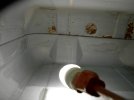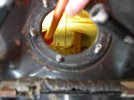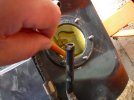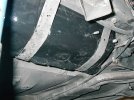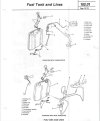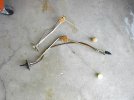Bjorn Nilson
True Classic
My fuel pump has always been a little bit noisy. Today I started up my UT engine after winter hibernation. I have an EU carbed tank but I use it without modifications for my injected UT engine with a Bosch 046 high-capacity fuel pump. When starting up today, the fuel pump was screaming and I noticed a fuel leak at the fuel return inlet. I removed the fuel return hose from the tank and rerouted the return fuel to a bottle and the pump ran normal. The return pipe was clogged, but I cleared it with a steel thread and pressurized air. The fuel pump is now running much better but is still slightly noisy compared to running the return to a bottle, so the return pipe may be too narrow and cause too much back pressure.
What differs an Injected tank from a carbureted fuel tank? What is the diameter of the return pipe on an IE tank? On the carbed tank it is just 5-6mm but it seems like a wider pipe is needed to allow enough flow to reduce back pressure/noise.
What differs an Injected tank from a carbureted fuel tank? What is the diameter of the return pipe on an IE tank? On the carbed tank it is just 5-6mm but it seems like a wider pipe is needed to allow enough flow to reduce back pressure/noise.

